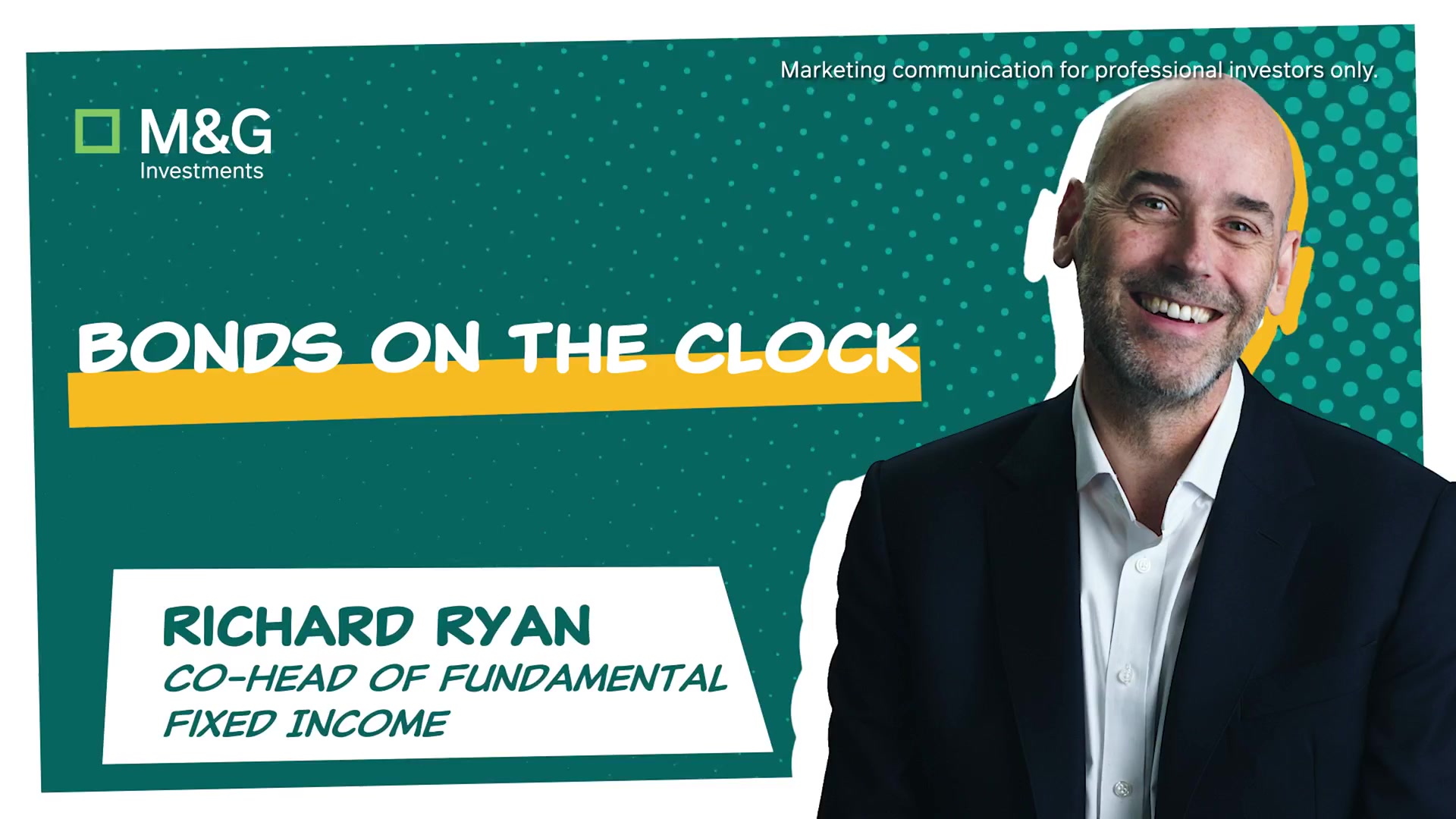The week that was …
Economic round-up
UK inflation
UK inflation came in below expectations for September, with prices rising 3.8% year on year. This was the third month in a row when inflation was unchanged, with some moderation in food prices seen as particularly welcome. Read more from the BBC here
UK retail sales
UK retail sales enjoyed a surprise bounce over September, with volumes rising 0.5%. This builds on a strong performance in August, when sales rose 0.6%. Computer and telecommunications retailers’ sales volumes were particularly strong. Read more from the ONS here
UK business sentiment
The flash reading of the UK’s Purchasing Managers Index (PMI) edged higher in October, bringing some hope the economy may have left behind its recent run of weakness. The data indicated improving confidence, with a return to growth for manufacturing and strength among consumers. Read more from S&P here
US inflation
US inflation came in behind expectations in September at 3%, with rising gas prices offset by a slowdown in rents. This could allow the US Federal Reserve leeway to cut interest rates when it meets next month. Read more from Reuters here
US business sentiment
The US flash PMI data for October showed the US economy sustaining its strong economic growth, heading into the final quarter of 2025. Momentum picked up across manufacturing and services, in spite of the ongoing government shutdown, although business confidence remained a weak spot. Read more from S&P here
Eurozone consumer confidence
The October reading for consumer confidence across the Euro area rose to -14.2, which was against expectations of a fall and the highest level in eight months. The stronger reading reflects support from lower borrowing costs and slowing price pressures. Read more from Trading Economics here
China GDP
China’s economic growth slowed to 4.8% in the third quarter of 2025 – its weakest pace in a year. While the country remains on track to meet its 5% target, domestic demand remained fragile, leaving it reliant on its manufacturing sector. Read more from Reuters here
Japan inflation
Japan’s core consumer prices rose 2.9% year-on-year in September, marginally higher than expected. The reading makes an interest rate hike from the current level of 0.5% more likely. Read more from Reuters here
Markets round-up
More market highs
Stockmarkets in the US and Europe rallied last week as weaker US inflation brought hopes of further interest rate cuts from the Federal Reserve. Both the S&P 500 and the Nasdaq were up around 1%, while the FTSE 100 closed the week at a record high of 9645.62 points. Read more the Guardian here
Scope cuts US rating
US rating European ratings agency Scope has downgraded its credit rating for the US from AA to AA-. The group pointed to the sustained deterioration in the country’s public finances and a weakening of governance standards. Read more from Reuters here
Raw materials turmoil
Producers of metals and other raw materials saw their share prices rise after strong earnings – in contrast to a significant fall in precious metals. Gold slid almost 6% while goldminers also saw significant losses. Read more from Morningstar here
Oil prices fall
Oil prices dropped at the end of last week amid concerns over the Trump administration’s commitment to sanctions on Russia’s two biggest oil companies, Lukoil and Rosneft. Brent crude futures dropped around 0.1% to $65.94 (£49.42) a barrel. Read more from Reuters here
Moody’s retains France rating
Moody’s retained its Aa3 credit rating for France but revised its outlook down from ‘stable’ to ‘negative’, arguing the country’s political fragmentation would make it difficult to tackle its deficit. DBRS, Fitch and S&P Global have all downgraded their ratings of France’s debt in recent weeks. Read more from Reuters here
“China may still be a cheaper way to access some of the winners from AI but the easy gains have likely already been made.
Selected equity and bond markets: 17/10/25 to 24/10/25
| Market | 17/10/25 (Close) |
24/10/25 (Close) |
Gain/loss |
|---|---|---|---|
| FTSE All-Share | 5057 | 5216 | +3.1% |
| S&P500 | 6664 | 6792 | +1.9% |
| MSCI World | 4296 | 4371 | +1.7% |
| CNBC Magnificent Seven | 406 | 416 | +2.5% |
| US 10-year treasury (yield) | 4.01% | 4.02% | |
| UK 10-year gilt (yield) | 4.54% | 4.43% |
Investment round-up
Schroders sees bounce in AUM
Schroders’ assets under management hit a new high of £816.7bn – up 5%, quarter on quarter, with the group attributing the uplift to net inflows and supportive markets. Schroder’ core asset management business stood at £573.6bn – a rise of 5.8%.
Investment complaints hit new high
Complaints about financial services firms increased by 3.6%, year on year, hitting 1.85 million, according to the Financial Conduct Authority. Notably, investment products saw a double-digit percentage rise in complaints (10.1%), with Hargreaves Lansdown Asset Management top of the list of individual businesses.
Oberon poaches Hawksmoor South West team
Oberon Investments has poached Hawksmoor’s Exeter head and three investment managers to lead its expansion into the South West. The group will open a new office in Exeter, headed by Andrew Little, who will be joined by Chris McNulty, Michael Balch and Emily Davidson.
Kirrage joins Brown Advisory
Nick Kirrage, formerly head of the Schroders Value Team, has joined Brown Advisory, where he will lead two new equity strategies – Brown Advisory Global Value and Brown Advisory International Value. He is recruiting a new investment team to support him.
CTI launches active ETF range
Columbia Threadneedle Investments has received regulatory approval to market a range of active ETFs to European clients. The firm’s QR (Quant Redefined) Series range, which will include European, US, global and emerging markets strategies, will list on the Deutsche Börse Xetra, SIX Swiss Exchange and the London Stock Exchange.
Pension ‘tax lock’ call rejected
The government refused to comment on an 18,700-strong petition from AJ Bell calling for a pension ‘tax lock’ to put an end to damaging pre-Budget speculation. It said it would not comment on proposed tax changes or tax related speculation ahead of the Budget.
Blackrock lists bitcoin ETP
BlackRock has listed a new iShares Bitcoin ETP on the London Stock Exchange. The ETP’s securities are physically backed by bitcoin held directly through Coinbase.
… and the week that will be
Federal Reserve rate-cut decision
At its meeting on Wednesday, the US Federal Reserve is widely expected to cut interest rates by another 25 basis points – even as the US government shutdown continues. If the cut does not materialise, it would likely be a major blow to markets. Read more from Morningstar here
US mega-cap earnings
As the US stockmarket continues to hit new highs, this week sees a raft of mega-cap earnings reports that may offer some clues as to whether the current market optimism is underpinned by reality. Alphabet, Amazon, Apple, Microsoft and Meta all report this week. LSEG expects total earnings for the combined ‘Magnificent Seven’ grouping to rise 16.6% against an 8.1% increase for the rest of the index. Read more from Reuters here
US-China trade talks
President Trump is expected to meet his Chinese counterpart Xi Jinping on Thursday. The pair are due to discuss the countries trade differences and are expected to build on the “framework” of a trade deal that has already been agreed. Read more from the FT here
The week in numbers
US interest rate decision: Consensus expectations are for another 25bps cut when the Federal Reserve meets this week, as the US central bank’s easing efforts continue.
ECB interest rate decision: Euro-area interest rates are expected to be held at 2.15% after the European Central Bank meets on Wednesday and Thursday.
Japan interest rate decision: The Bank of Japan is expected to hold the country’s interest rate at 0.5% after it meets on Wednesday and Thursday.
US GDP: Consensus expectations are for the advance reading of US GDP over the third quarter will show economic growth holding at 3.8% quarter on quarter.
Eurozone inflation: Consensus expectations are that the October flash reading on Eurozone inflation will show prices rising 2.1% year on year, down from 2.2%, and 0.2% month on month, down from 0.1%. Year-on-year core inflation is meanwhile expected to slow from 2.4%. to 2.3%
Eurozone GDP: Consensus expectations are for the flash reading of Q3 GDP to show economic growth across the Eurozone holding at 0.1% quarter on quarter; but year-on-year growth slowing to 1.1% from 1.5%.
German GDP: Consensus expectations are for the flash reading of Q3 GDP to show economic growth in Germany recovering to 0.1% quarter on quarter, from -0.3%; but slowing to 0.1% year on year, from 0.2%.
US consumer confidence: Consensus forecasts have the US consumer confidence index falling to 93 in October, from 94.2 the previous month.
US PCE index: The September reading of the personal consumption expenditures index is expected to show core prices in the US rising 0.2% month on month.
In focus: Best-laid plans
After months of diplomatic – and occasionally not-so-diplomatic – wrangling, the US and China have agreed the “framework” of a trade deal, with the final details to be thrashed out by presidents Trump and Xi when they meet later this week.
This is likely to include concessions on TikTok from the Americans and on rare earths from the Chinese. Importantly, it also means the Chinese are likely to avoid punitive tariffs of up to 100% on their goods – and investors will certainly be hoping it reignites momentum in the Chinese stockmarket.
All this comes as China’s latest round of five-year plans sought to bolster self-reliance for the country’s economy. In common with the previous set of plans, they promoted technological advancement in areas such as AI, while also promising greater efforts to expand domestic demand and improve people’s livelihoods.
At a time when domestic demand has been weak, these measures are very much needed. The latest set of GDP figures showed the economy still reliant on manufacturing and exports, with growth slowing to 4.8% in the third quarter. While the economy is still on track to hit the government’s target of 5% for 2025, there are still clear imbalances. The economy remains more vulnerable to the whimsy of the White House than policymakers would like.
Nevertheless, says Robert Gilhooly, senior emerging markets economist at Aberdeen Investments, the economy should be resilient. “Assuming the current threats are more of a bluff – and we probably get something akin to the status quo, with tariffs at the 40% mark – the Chinese economy should weather this tariff shock,” he adds.
Gilhooly points out that Chinese exports to the US are down around 30% from their March level but, overall, China’s external side continues to hold up well, with strong exports to Asean-group countries and Europe compensating for the weakness in the US.
That said, he recognises there are still vulnerabilities in the Chinese economy – in particular, fixed-asset investment data is gloomy, with the weakest growth rate outside the pandemic period. There are also some ongoing drags from the real estate sector.
There are pockets of excess capacity and headwinds from the trade war, but the data backs up the idea that Chinese growth has not been that damaged by the latter.”
“There are pockets of excess capacity and headwinds from the trade war, but the data backs up the idea that Chinese growth has not been that damaged by the latter,” reasons Gilhooly. “We expect it to be growing at a slower pace, but still somewhere around 3.5% to 4% over the next five years seems achievable. It has had a bit of a shock, but is still growing reasonably strongly.”
In its latest Long-Term Capital Market Assumptions report, meanwhile, JP Morgan Asset Management draws broadly the same conclusion, arguing structural headwinds from the real estate sector and adverse demographics remain key concerns.
“These are partially offset by a faster than expected pivot toward technology-intensive investment, broader innovation and AI adoption,” it adds, however. “Additionally, recent policy reforms aimed at delaying retirements should slow the decline in labour supply. Even so, subdued private sector sentiment and ongoing weakness in property and infrastructure investment continue to weigh on the outlook and tamper upside potential.”
The group remains worried about the deflationary impact of less integrated global trade. “Excess manufacturing capacity – historically absorbed by the US – could instead be diverted to Chinese consumers,” it argues. “Meanwhile, waning demand for Chinese exports could trigger factory closures and broader economic stagnation.”
Gilhooly believes the latest round of five-year plans will do little to change these imbalances. They are largely a continuation of recent policy priorities, he points out, “with a somewhat greater emphasis on accelerating technological self-reliance and scientific skills”. “Much of this will feel like a continuation of the push to upgrade and expand domestic manufacturing capabilities as set out in the ‘Made in China 2025’ blueprint,” he adds.
“Policy has recently sought to shore up consumption, but geopolitical pressure is likely to keep priorities biased to the supply-side of the economy, making it harder to shake off deflationary pressures – even if the authorities target sectors with well-known excess capacity problems, such as autos, solar and battery manufacturing.”
There are a lot of industries and a lot of sectors in China where it is difficult to make a good return.”
For Abbas Barkhordar, manager on the Schroder AsiaPacific investment trust, this excess capacity is part of the reason why China is still a difficult place to invest, even if the trade war does not prove as damaging as expected and the economy muddles through.
“There are a lot of industries and a lot of sectors in China where it is difficult to make a good return,” he says. “So you can be a good company – well-run, a good allocator of capital and with good competitive advantages – but the industry you are in is just too competitive, has too much capacity and it is very hard to make a good return. The return on capital investment has been decreasing a lot.
At a macroeconomic level, Barkhordar continues, China has too much capital stock and too much investment. “That means, even if the economy continues to grow, it might not translate into earnings per share growth,” he explains. “So you have got to be really selective on the industries you like.”
Ecommerce and mobile gaming are an instructive contrast, he believes. Ecommerce has gone from a handful of providers to being super-competitive whereas gaming has become much less competitive, because the cost to develop a mobile game has increased significantly. It is therefore much easier for larger players to weather the cost of new development and absorb the occasional miss.
JP Morgan Asset Management offers the same criticism of the Chinese market, noting it has low valuations but also low returns on equity. “While Chinese authorities aim to protect ‘national champion’ companies, the business environment in China does not currently support the higher profitability and margins of some developed markets,” it adds.
The Chinese stockmarket has had a strong year to date – with the Shanghai Composite index up 19.25% and the Hang Seng up 31.71% – but momentum has levelled off in October as investors have waited to see whether a deal would be agreed with the US.
There are still selected opportunities in the Chinese market – and it may be a cheaper way to access some of the winners from AI – but the easy gains have likely already been made. While the stockmarket may enjoy something of a relief rally after the final tariffs have been announced, it still needs careful navigation.
Read more on this from the Atlantic Council here, from ING here and from Schroders here

In focus: Eyes on the Fed II
The revised US inflation report brought some joy to stockmarkets last week as inflation came in below expectations at 3%, making a second successive US interest rate cut more likely. For the optimists, it was a clear sign the Trump tariffs are unlikely to have the inflationary impact many predicted. For their part, the pessimists suspect any celebrations may be premature.
The S&P 500 and Nasdaq hit new highs but the bond market response was muted, with 10-year US treasury yields rising on Thursday and Friday. That shows how much optimism on rate cuts is already priced into bond markets.
Nathaniel Casey, investment strategist at UK wealth manager Evelyn Partners, is one of those who believes it is too soon to conclude the inflationary threat from tariffs is unlikely to materialise.
“We continue to see evidence of tariff impacts creeping into the inflation data, with core goods inflation accelerating from 0.3% year-on-year in May to 1.5% year-on-year in September,” he says. “Within this, the basket for apparel – an import sensitive segment – accelerated by 0.7% month-on-month in September, its highest rate since this time last year.”
And Lindsay James, investment strategist at Quilter, suggests there may be worse to come, arguing inflationary pressures may have been deferred due to a combination of stockpiling and lengthy shipping lead times.
“Meanwhile, new tariffs keep on coming, with October bringing new rates on timber and furniture,” she says. “If Trump continues to come and go with his tariff announcements – with Canada the latest to face his ire – the inflationary effects could be elongated.”
There are also concerns over the accuracy of the current data, with the government shutdown adding complexity to data collection and analysis. “Today’s print suggests the data collection was completed prior to the shutdown,” notes James.
“While today’s figures might be more reliable than first expected, it perhaps serves as a warning on the accuracy in the coming months, should the shutdown continue. The overall dearth of official data will heap the pressure onto the Federal Reserve at a time when the administration is already interfering considerably.”
For now though, notes Casy, the data remains consistent with the Fed’s easing path. Core inflation edged back and headline inflation rose only modestly, suggesting price pressures are contained. This, combined with the ongoing weakness in the labour market, should support a 25 basis-point cut at the upcoming Fed meeting – and keep markets happy for the time being.










